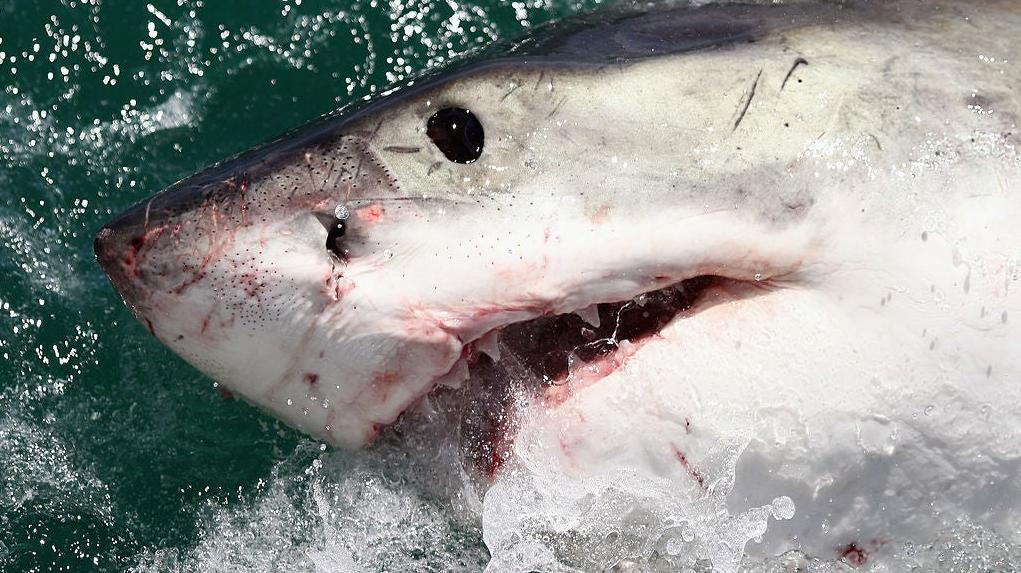What Sharks Can Teach Us About Dining Out
A study of social sharks inspires the Great White Method for Satisfying Dining.
Humans should stay the hell out of the ocean. Fishing is fine; recreational boating is also generally fine. But swimming? Swimming is a bad idea. Humans have explored less than 20% of the world's oceans, which means we genuinely have no idea what kind of terrors lie beneath the waves. And the terrors we do know about—sharks—should be enough to keep us quivering on the beach in fear. Swimming with sharks is a recipe for dismemberment—but that doesn't mean we can't learn from them. Especially in the dining realm.
I'll explain. Earlier this week, I saw an article in People referencing a study from Florida International University (FIU) researchers. The study, led by FIU marine scientist Dr. Yannis Papastamatiou, tracked great white sharks off the coast of Mexico in an effort to understand their mysterious social lives. The researchers specifically assessed a group of great white sharks that gather seasonally around Guadalupe Island and, per FIU, "tend to stick together when patrolling." In one instance, the sharks were observed "stopping by to check out the seal colonies around the island." Buffet-hopping, if you will.
The researchers are still nailing down the exact reason for the sharks' social behavior. "The important question we still have to answer is, what is the reason for being social for these sharks?" Papastamatiou says. "We still don't know. But it is likely they may stay in proximity of other individuals in case those individuals are successful in killing large prey."
In other words, the sharks may form little shark cliques in order to hunt together, resulting in more food for every shark in the clique. (I imagine shark cliques are a lot like people cliques; there's a queen bee, a ditzy shark with huge boobs, a brainy shark who does everyone's homework, and one homely brunette shark.) It's an excellent idea, if you ask me. With that, I present: The Great White Method for More Satisfying Dining.
The Great White Shark Method for More Satisfying Dining
As evidenced by the FIU study, Great Whites tend to form cliques in hopes of hunting more effectively. The bigger your pack, the more easily you'll take down large prey. Personally, I like to apply this strategy to restaurant dining. While I do enjoy dining solo, dining in a small group—with two or three friends, typically—means that we can take down large quantities of food without breaking the bank.
How? By splitting a shit ton of entrees, that's how. Can't decide between a burger and a pasta dish? With the Great White method, you can have both for the cost of one. You order the burger, your friend orders the pasta, you split each entree down the middle and enjoy half of each. You get a more satisfying dining experience without having to purchase both entrees yourself. It's the ol' split-'n'-swap.
Is this a revolutionary approach? No, not really; humans have ostensibly been splitting entrees since two Homo neanderthalensis pals decided to share a mammoth leg and a dinosaur egg. I imagine that exchange went thusly:
Neanderthal 1: Me can't decide. Mammoth leg very juicy, but dinosaur egg also very tasty.
Neanderthal 2: Me want both. Me split leg and egg with rock. We share.
Neanderthal 1: Me like this idea. Me forgive you for killing my wife with club.
Neanderthal 2: Me thank you.
Lillian Stone, Takeout historian!
Either way, framing this kind of shared dining via the Great White Method lends a certain predatory glamour to the whole affair. If you're dying to try a trendy new spot, invite a few pals along so you can conquer the entire menu with ease. Hell, order an extra entree for the table to sample. You'll get to try a hot new dish without shelling out for the whole thing—or going home so stuffed that you have to be manually rolled through your doorway. When in doubt, do as the great whites do.
